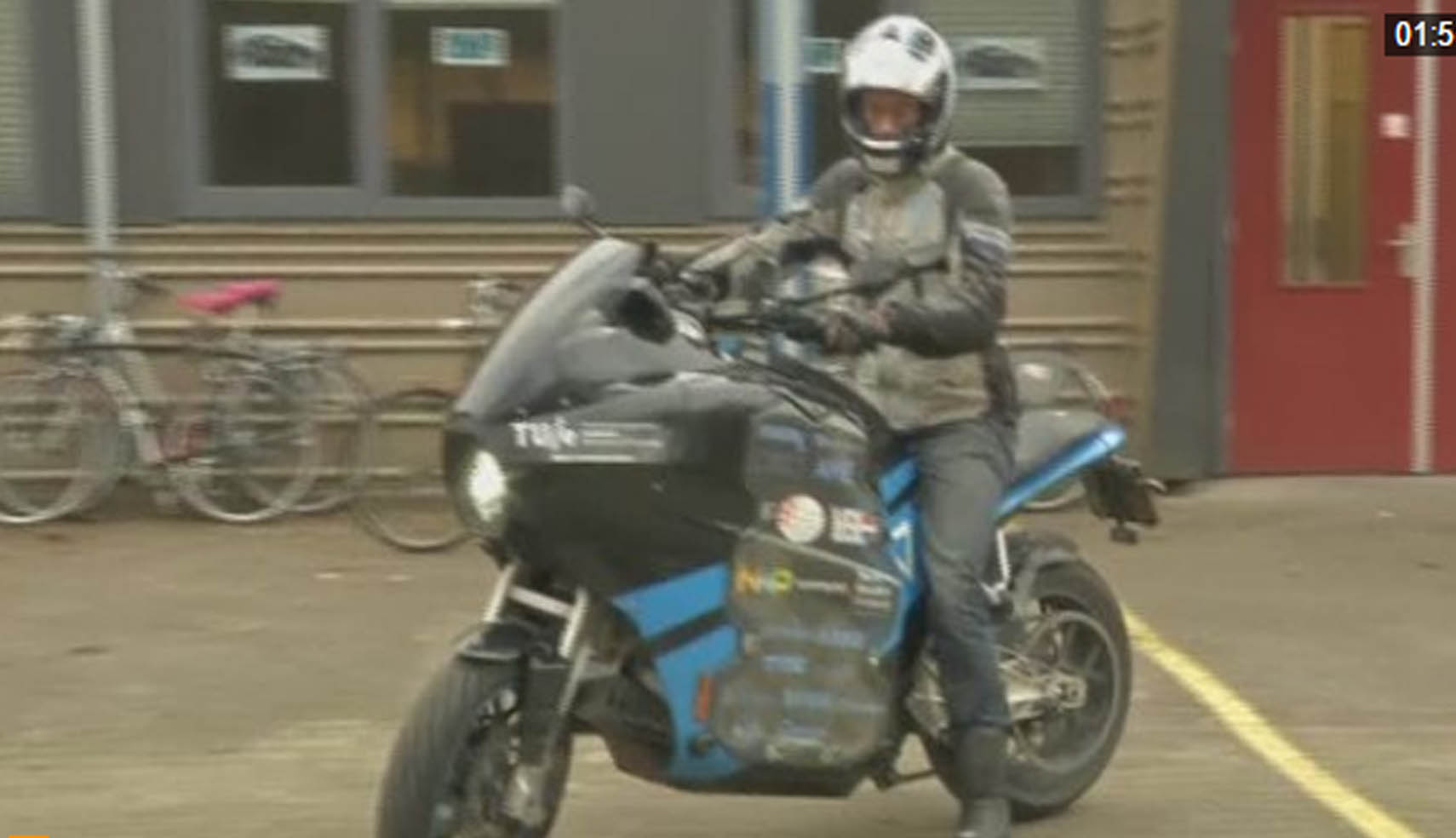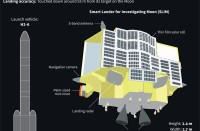
(Reuters) — Undergraduates from Eindhoven University of Technology have successfully undertaken an 80-day round-the-world motorcycle journey on an electric motorbike they built from scratch.
The team of 23 students, from various academic disciplines, launched the project, entitled STORM Eindhoven, two years ago with the aim of raising the profile of electric powered vehicles.
“The 80 days around the world challenge meant that we had to travel 500 or 600 kilometers a day, even longer sometimes. An electric motorcycle that is capable of doing that didn’t exist, so we had to build one ourselves,” said STORM spokesman Bas Verkaik.
Central to the STORM Wave motorcycle design is the modular, swappable, batteries that allowed flat batteries to be replaced in just seven minutes.
Verkaik told Reuters: “With a full pack you can ride 400 kilometers on one single charge. But during our tour we had to drive further. So we just took the empty batteries out, replaced them with charged ones, and we could ride again.”
After around 250 kilometres each day, batteries were recharged and drivers were switched. A bus containing the other team members followed behind. Overnight, both sets of batteries were charged ahead of the next day’s travelling, powered solely by the existing electricity grid. The team did not use the fast charging system it has developed which can recharge batteries in just 38 minutes.
The modular system totaling 24 batteries could also be reduced in number during parts of the journey when a lighter vehicle, or one with a lower center of gravity, was beneficial.
“During our tour we faced some really bad roads – beautiful countries, but with really bad roads, big puddles on the roads,” explained Verkaik. “It’s really beneficial when you do not have a heavy bike or a bike with a relatively high center of gravity. That’s also why we made it modular, so you do not necessarily need to have all the batteries inside. So when we faced those bad roads we just took, for example half of the batteries out, giving us a lighter motorcycle and lower center of gravity, which made it easier to handle.”
The group started their journey from Eindhoven in August, with the team travelling through the Middle East via Turkey, going through countries such as Iran, Turkmenistan, and Uzbekhistan. They then drove across China before eventually reaching the United States via sea transportation, before returning through Europe to arrive back on campus in early November, having traveled at least 23,000 kilometers.
Co-driver, and logistics coordinator, Yorick Heidema, said the team is passionate about overcoming common criticisms of electric vehicles.
“The misconceptions people have about electric vehicles is that either they’re slow or they don’t have enough power or they can’t drive fast or far enough,” said Heidema. “With our motorcycle it can go from zero to 100 (kilometers per hour) in under five seconds, and probably could go even faster if we changed some specs. Furthermore it has a range of about 400 kilometers, if you take a typical cycle of driving in the city and then driving a bit on the highway and driving in the city again. Also, I think it looks pretty nice. That’s also a misconception that people have, that electric vehicles have to be futuristic and they don’t like the design, but I’ve only heard good things about this motorcycle.”
The journey was made without serious technical problems and the team featured on news channels throughout their ride.
“Everywhere we went people were very enthusiastic to see us,” said Heidema. “Even on the highway people were sticking out their heads and taking selfies with the motorcycle. Or if we stopped, even in the middle of nowhere where we thought there would be no-one, within five minutes there were about five or six people standing around asking us about the motorcycle and what we were doing. There is a very large interest in these new types of products in the world, and also specifically for our motorcycle.”
The STORM Wave has a top speed of 160 kilometers (100 miles per hour), with a maximum output of 70 kilowatts from the motor and a maximum torque of approximately 240 nm (newton meter).
According to Verkaik, “what’s really cool is that we have a gearbox, which is not necessary for an electric motorcycle because you have the instant torque and the torque is always there. It’s a planetary gearbox, which actually enables us to accelerate even faster while still driving efficiently at high speeds.”
It isn’t the first time electric vehicles have undertaken such a challenge. The 80 days 2016 challenge saw teams drive their electric cars similar distances, while last July the Solar Impulse aircraft completed the first round-the-world solar flight from Abu Dhabi to Hawaii.
The STORM team says its modular battery concept is unique and that the project has showed the world that long-distance electric vehicle travel is not just feasible, but cool.







